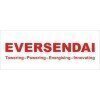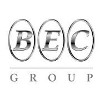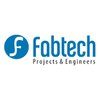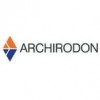Filter interviews by
Fabtech Projects & Engineers Safety Engineer Interview Questions and Answers
7 Interview questions
Safety refers to the condition of being protected from harm, danger, or injury in various environments and situations.
Safety encompasses physical, emotional, and psychological well-being.
In workplaces, safety measures include protective equipment like helmets and gloves.
In homes, safety can involve smoke detectors and secure locks to prevent intrusions.
In transportation, safety protocols include seat belts and tra...
An extinguisher is a portable device used to put out fires by discharging an extinguishing agent.
Types of extinguishers include water, foam, dry powder, CO2, and wet chemical.
Water extinguishers are effective for Class A fires (wood, paper).
CO2 extinguishers are suitable for electrical fires (Class C).
Dry powder extinguishers can tackle multiple classes of fire, including Class B (flammable liquids).
Wet chemical e...
Fire is an exothermic chemical reaction between fuel and oxygen that produces heat and light.
Fire requires three elements to occur: fuel, oxygen, and heat.
Examples of fuel sources include wood, paper, gasoline, and natural gas.
The heat needed to start a fire can come from a variety of sources, such as a match, a spark, or the sun.
Fire produces flames, smoke, and heat, and can spread rapidly if not controlled.
A housekeeping area is a designated space where cleaning supplies, tools, and equipment are stored and used to maintain cleanliness and organization.
Housekeeping areas are essential for ensuring a safe and clean work environment.
These areas typically include storage for cleaning chemicals, tools such as brooms and mops, and equipment like vacuum cleaners.
Regular maintenance and organization of housekeeping areas h...
PPEs in the industrial sector refer to Personal Protective Equipment, which are items worn to minimize exposure to hazards.
PPEs include items such as helmets, gloves, goggles, ear protection, high-visibility clothing, and safety harnesses.
They are essential for protecting workers from injuries and illnesses in the workplace.
Employers are responsible for providing appropriate PPEs and ensuring their proper use.
Trai...
The PASS method is a technique used in firefighting to help individuals remember the steps to take when using a fire extinguisher.
PASS stands for Pull, Aim, Squeeze, Sweep.
Pull the pin to break the tamper seal.
Aim the nozzle at the base of the fire.
Squeeze the handle to discharge the extinguishing agent.
Sweep the nozzle from side to side while aiming at the base of the fire.
Hot work job mechanical area refers to tasks involving welding, cutting, or other activities that generate heat and sparks. PPEs are personal protective equipment used to protect workers from hazards.
Hot work job mechanical area includes tasks like welding, cutting, and grinding that produce heat and sparks
PPEs (Personal Protective Equipment) are worn by workers to protect against hazards such as burns, eye injuri...
Fabtech Projects & Engineers Safety Engineer Interview Experiences
3 interviews found
I applied via Apna Jobs and was interviewed in Nov 2024. There was 1 interview round.
(7 Questions)
- Q1. What is a fire? Ans-fire is a exhorhermic chemical reaction between fuel and coygen in sufficient heat
- Ans.
Fire is an exothermic chemical reaction between fuel and oxygen that produces heat and light.
Fire requires three elements to occur: fuel, oxygen, and heat.
Examples of fuel sources include wood, paper, gasoline, and natural gas.
The heat needed to start a fire can come from a variety of sources, such as a match, a spark, or the sun.
Fire produces flames, smoke, and heat, and can spread rapidly if not controlled.
- Q2. Classification fire? Ans-1/combustible solid 2/flammable liquids 3/flammable gases
- Q3. What is pass method?
- Ans.
The pass method is a systematic approach used in safety engineering to assess potential hazards and risks in a workplace.
The pass method involves identifying hazards, analyzing risks, selecting control measures, and implementing safety protocols.
It is important to regularly review and update the pass method to ensure ongoing safety in the workplace.
Example: Using the pass method, a safety engineer identifies a potentia...
- Q4. What is a housekeeping are?
- Ans.
A housekeeping area is a designated space where cleaning supplies, tools, and equipment are stored and used to maintain cleanliness and organization.
Housekeeping areas are essential for ensuring a safe and clean work environment.
These areas typically include storage for cleaning chemicals, tools such as brooms and mops, and equipment like vacuum cleaners.
Regular maintenance and organization of housekeeping areas help p...
- Q5. What is a hot work job mechanical area,or what is a ppes
- Ans.
Hot work job mechanical area refers to tasks involving welding, cutting, or other activities that generate heat and sparks. PPEs are personal protective equipment used to protect workers from hazards.
Hot work job mechanical area includes tasks like welding, cutting, and grinding that produce heat and sparks
PPEs (Personal Protective Equipment) are worn by workers to protect against hazards such as burns, eye injuries, a...
- Q6. What is a pass method
- Ans.
The PASS method is a technique used in firefighting to help individuals remember the steps to take when using a fire extinguisher.
PASS stands for Pull, Aim, Squeeze, Sweep.
Pull the pin to break the tamper seal.
Aim the nozzle at the base of the fire.
Squeeze the handle to discharge the extinguishing agent.
Sweep the nozzle from side to side while aiming at the base of the fire.
- Q7. What is a ppes in industrial area
- Ans.
PPEs in the industrial sector refer to Personal Protective Equipment, which are items worn to minimize exposure to hazards.
PPEs include items such as helmets, gloves, goggles, ear protection, high-visibility clothing, and safety harnesses.
They are essential for protecting workers from injuries and illnesses in the workplace.
Employers are responsible for providing appropriate PPEs and ensuring their proper use.
Training ...
Interview Preparation Tips
Skills evaluated in this interview
I appeared for an interview in Apr 2025, where I was asked the following questions.
- Q1. What is safety meaning
- Ans.
Safety refers to the condition of being protected from harm, danger, or injury in various environments and situations.
Safety encompasses physical, emotional, and psychological well-being.
In workplaces, safety measures include protective equipment like helmets and gloves.
In homes, safety can involve smoke detectors and secure locks to prevent intrusions.
In transportation, safety protocols include seat belts and traffic ...
- Q2. Safety electric
- Q3. What is extinguisher
- Ans.
An extinguisher is a portable device used to put out fires by discharging an extinguishing agent.
Types of extinguishers include water, foam, dry powder, CO2, and wet chemical.
Water extinguishers are effective for Class A fires (wood, paper).
CO2 extinguishers are suitable for electrical fires (Class C).
Dry powder extinguishers can tackle multiple classes of fire, including Class B (flammable liquids).
Wet chemical exting...
Interview Preparation Tips
I applied via Naukri.com and was interviewed in May 2023. There were 2 interview rounds.

(2 Questions)
- Q1. Think back your earlier interview and re read the job description.
- Q2. Why did you decide to apply this role
- Ans.
I decided to apply for this role because of my passion for ensuring safety in engineering projects.
Passion for safety in engineering
Desire to contribute to the field
Relevant experience and skills
Interest in problem-solving and risk assessment
Opportunity for professional growth and development
Interview Preparation Tips
Top trending discussions






Interview questions from similar companies

I applied via Naukri.com and was interviewed in Sep 2020. There was 1 interview round.
Interview Questionnaire
3 Questions
- Q1. Roles & Responsibility
- Q2. What is HIRA &heirachy of Control measure
- Ans.
HIRA stands for Hazard Identification and Risk Assessment. Hierarchy of Control Measures is a systematic approach to eliminate or minimize hazards.
HIRA is a process of identifying potential hazards and analyzing the associated risks.
Hierarchy of Control Measures is a step-by-step approach to eliminate or minimize hazards.
The hierarchy includes five levels: elimination, substitution, engineering controls, administrative...
- Q3. What precautions to be taken in lifting work
- Ans.
Precautions must be taken to ensure safe lifting work.
Assess the weight of the load and ensure it is within the safe lifting limit.
Use proper lifting techniques, such as bending at the knees and keeping the back straight.
Wear appropriate personal protective equipment, such as gloves and safety shoes.
Ensure the lifting area is clear of obstacles and hazards.
Use mechanical aids, such as cranes or forklifts, for heavy loa...
Interview Preparation Tips

Interview Questionnaire
1 Question
- Q1. How to provide fall arresting system in high rise storry
- Ans.
Fall arresting system in high rise story can be provided through various means.
Use of safety nets
Installation of guardrails
Use of personal fall arrest systems
Proper training and education of workers
Regular inspection and maintenance of equipment


(2 Questions)
- Q1. Safety related question work at height. Lifting Plan
- Q2. Log out Tag out related question
Interview Preparation Tips

I applied via Approached by Company and was interviewed in Dec 2023. There were 2 interview rounds.
(1 Question)
- Q1. Explain hydrojetting safety
- Ans.
Hydrojetting safety involves following proper procedures and using appropriate protective equipment to prevent accidents and injuries.
Ensure all personnel involved in hydrojetting are trained on safety protocols
Wear appropriate personal protective equipment (PPE) such as gloves, goggles, and protective clothing
Inspect and maintain hydrojetting equipment regularly to ensure safe operation
Follow proper lockout/tagout pro...
(1 Question)
- Q1. Explain about yourself
Interview Preparation Tips

(6 Questions)
- Q1. What about yourJob ?
- Q2. My job is everything provide safety
- Q3. What's your self ?
- Q4. This is my all job relationship details
- Q5. Which hieght need work at height?
- Ans.
Work at height is typically considered to be any task performed above ground level, such as on ladders, scaffolding, or roofs.
Work at height typically refers to tasks performed above ground level
Common examples include working on ladders, scaffolding, or roofs
Height requirements may vary depending on the specific job or industry
- Q6. Ground level to 1.8 mtr
- Ans.
The question is likely referring to the height range for safety measures or regulations.
This height range is commonly used in safety regulations for fall protection.
Safety measures such as guardrails or safety harnesses may be required for working at this height.
Training on proper use of safety equipment is essential for workers at this height.
Interview Preparation Tips

(2 Questions)
- Q1. Questions will be asked on previous company roles and responsibilities.
- Q2. Depends upon previous experience.
(2 Questions)
- Q1. Basics on structure and finishings
- Q2. Questions on structure and finishings
Interview Preparation Tips

I appeared for an interview before Jul 2016.
Interview Questionnaire
3 Questions
- Q1. What is excavation ?
- Ans.
Excavation is the process of removing earth or other materials from a site to create a hole or cavity.
Excavation is commonly done for construction purposes, such as building foundations or underground utilities.
It involves the use of heavy machinery, such as excavators or backhoes, to dig and remove the soil or rock.
Excavation may also be done for archaeological purposes to uncover artifacts or historical remains.
Safet...
- Q2. What is cretical lifting ?
- Ans.
Critical lifting refers to the process of lifting heavy objects or loads that require special attention and precautions to ensure safety.
Critical lifting involves assessing the weight and dimensions of the load to determine the appropriate lifting equipment and techniques.
It requires proper planning and coordination to minimize the risk of accidents and injuries.
Factors such as the stability of the load, the condition ...
- Q3. What is JHA
- Ans.
JHA stands for Job Hazard Analysis. It is a systematic process used to identify and evaluate potential hazards in the workplace.
JHA is used to assess the risks associated with specific job tasks or activities.
It involves breaking down the job into steps, identifying potential hazards, and determining control measures to mitigate those hazards.
JHA helps in preventing accidents, injuries, and illnesses by proactively add...
Interview Preparation Tips
Experience: Employer contact me on my mobile no. and called for face to face interview in Mumbai.
Tips: Be positive and give specific answers to questions. Don't get confuse to interviewer. Because he would be more intelligent then you.
Round: Technical Interview
Experience: I was done good
Tips: Read your notes and prepare yourself like a complete person for the above job.
Fabtech Projects & Engineers Interview FAQs
Tell us how to improve this page.
Fabtech Projects & Engineers Interviews By Designations
- Fabtech Projects & Engineers Safety Engineer Interview Questions
- Fabtech Projects & Engineers Safety Officer Interview Questions
- Fabtech Projects & Engineers IT Network Engineer Interview Questions
- Fabtech Projects & Engineers HR Executive Interview Questions
- Fabtech Projects & Engineers Electrical Engineer Interview Questions
- Fabtech Projects & Engineers Safety Supervisor Interview Questions
- Fabtech Projects & Engineers Quality Engineer Interview Questions
- Fabtech Projects & Engineers Senior Operations Manager Interview Questions
- Show more
Interview Questions for Popular Designations
Overall Interview Experience Rating
based on 4 interview experiences
Difficulty level
Duration
Interview Questions from Similar Companies
Fabtech Projects & Engineers Safety Engineer Reviews and Ratings
based on 4 reviews
Rating in categories
|
Project Engineer
20
salaries
| ₹2.5 L/yr - ₹7.1 L/yr |
|
Quality Engineer
18
salaries
| ₹2 L/yr - ₹8 L/yr |
|
QA QC Engineer
16
salaries
| ₹3.6 L/yr - ₹8.5 L/yr |
|
Production Engineer
13
salaries
| ₹2 L/yr - ₹5.4 L/yr |
|
Purchase Engineer
13
salaries
| ₹2.3 L/yr - ₹6.5 L/yr |

J K Fenner

Saudi Binladin Group

Bahwan Engineering

Amara Raja Infra
- Home >
- Interviews >
- Fabtech Projects & Engineers Interview Questions












